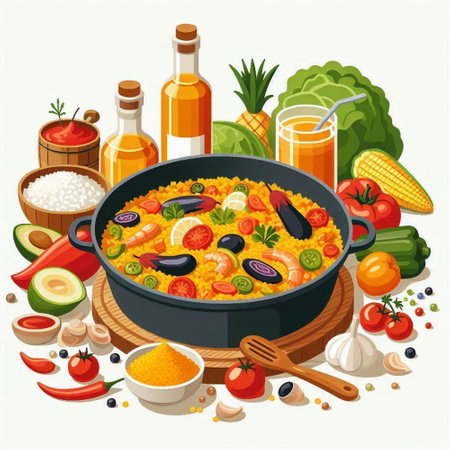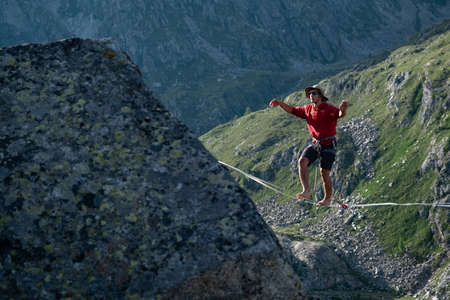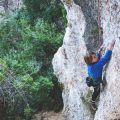1. Understanding Caloric and Nutritional Needs on the Trail
When youre planning meals for a multi-day hike in the U.S., its important to understand how much energy your body will need and where that energy should come from. Hiking with a full pack over varied terrain burns more calories than a typical day at home, so youll need to eat enough to keep your body fueled and strong.
How Many Calories Do You Need?
The average hiker burns between 2,500 to 4,500 calories per day, depending on body size, hiking intensity, temperature, altitude, and pack weight. Here’s a simple way to estimate your daily needs:
Calorie Estimation Table
| Body Weight (lbs) | Light Hiking (cal/day) | Moderate Hiking (cal/day) | Strenuous Hiking (cal/day) |
|---|---|---|---|
| 120-150 | 2,500-3,000 | 3,000-3,500 | 3,500-4,000 |
| 151-180 | 2,800-3,300 | 3,300-3,800 | 3,800-4,300 |
| 181+ | 3,100-3,600 | 3,600-4,100 | 4,100-4,600 |
If you’re hiking in cold weather or carrying a heavy pack, aim for the higher end of these ranges.
Balancing Proteins, Carbs, and Fats for Energy
Your body needs a mix of carbohydrates, protein, and fat for sustained energy on the trail. Here’s a general guideline for macronutrient balance during multi-day hikes:
- Carbohydrates (50-60%): Your main fuel source—think tortillas, instant rice, dried fruit, and oatmeal.
- Fats (25-35%): Dense energy that keeps you full—nuts, nut butters, cheese, olive oil.
- Protein (15-20%): Helps with muscle repair—jerky, tuna packets, dehydrated beans.
Sample Daily Macronutrient Breakdown (for 3,500 Calories)
| Nutrient Type | % of Total Calories | Total Grams per Day* | Main Food Examples |
|---|---|---|---|
| Carbohydrates | 55% | ~480g | Pasta, instant potatoes, granola bars |
| Fat | 30% | ~117g | Nuts/seeds, peanut butter, cheese sticks |
| Protein | 15% | ~131g | Tuna pouches, jerky, protein bars |
*Grams are estimated based on 1g carb/protein = 4 cal; 1g fat = 9 cal.
Tuning Your Plan as You Go
No two hikers are exactly alike. You might find you need more snacks or crave salty foods after sweating all day. It’s always smart to bring extra snacks like trail mix or energy bars in case you burn more calories than expected. Listen to your body and adjust your intake as needed to stay energized throughout your adventure.
2. Meal Planning Strategies for Multi-Day Hikes
When youre gearing up for a multi-day hike, planning your meals is just as important as mapping your route. Smart meal planning ensures you stay energized, satisfied, and keep your pack as light as possible. Here are some effective strategies to help you organize your food for the trail.
Balance Variety with Simplicity
While it’s tempting to pack gourmet options, simplicity is key on the trail. Choose foods that are easy to prepare and require minimal cleanup. However, a little variety goes a long way in keeping morale high and preventing “food fatigue.” Rotate flavors and types of meals so you don’t get bored eating the same thing every day.
Sample Meal Rotation Table
| Day | Breakfast | Lunch | Dinner | Snacks |
|---|---|---|---|---|
| Day 1 | Oatmeal with dried fruit | Tortilla with peanut butter & honey | Freeze-dried chili mac | Trail mix, jerky |
| Day 2 | Granola with powdered milk | Pita with tuna packet & mayo | Couscous with dehydrated veggies & chicken | Energy bars, mixed nuts |
| Day 3 | Breakfast bar, instant coffee | Bagel with cheese & salami | Instant mashed potatoes & gravy mix with beef jerky pieces | Dried fruit, crackers |
Lightweight and Nutritious Choices
Opt for dehydrated or freeze-dried foods—they’re lightweight and just need water to prepare. Instant grains (like rice or couscous), nut butters, hard cheeses, cured meats, and energy bars are all great choices. Avoid canned goods and glass containers; they’re heavy and not worth the extra weight.
Packing Tip: Portion Control & Pre-Packaging
Pre-portion your meals into resealable bags at home. This makes meal prep on the trail faster and helps you avoid carrying excess packaging. Label each bag by meal and day for quick identification. Consider using color-coded bags or containers for breakfast, lunch, dinner, and snacks.
Example: Packing System Table
| BAG COLOR/TYPE | MEAL TYPE | CONTENTS EXAMPLES |
|---|---|---|
| Blue Zip Bag | Breakfasts | Oatmeal packets, granola bars, instant coffee packs |
| Red Zip Bag | Dinners | Pasta sides, freeze-dried entrees, spice packets |
| Clear Small Bags | Snacks | Nuts, trail mix, dried fruit, jerky |
| Green Zip Bag | Lunches | Tortillas/pitas, tuna/chicken pouches, cheese sticks |
Add Flavor without Bulk or Weight
Pep up your meals by bringing lightweight seasonings like salt, pepper, hot sauce packets, or small spice mixes. Even a small bottle of olive oil can add calories and flavor with minimal weight penalty.
Tweak Your Plan As You Go
Your appetite may change once youre out there—be flexible! Keep an extra snack or two handy in case you need more fuel than planned. With these strategies in mind, youll have tasty meals to look forward to at every stop along the trail.

3. Menu Ideas and Trail-Tested Recipes
Planning your meals for a multi-day hike can be fun and delicious! American hikers love foods that are easy to prepare, lightweight, and satisfying after a long day on the trail. Below are some tried-and-true ideas for breakfast, lunch, dinner, and snacks that balance flavor, convenience, and nutrition.
Breakfast Favorites
| Meal | Description | Preparation Tips |
|---|---|---|
| Oatmeal Packets | Instant oats with mix-ins like dried fruit, nuts, or powdered milk. | Add hot water; customize with cinnamon or peanut butter. |
| Granola Bars | Pre-packaged or homemade bars loaded with grains and seeds. | No prep needed; great for eating on the go. |
| Pancake Mix (Just-Add-Water) | Lightweight mixes made for camping. | Cook on a lightweight skillet over your camp stove. |
Lunch Ideas
| Meal | Description | Preparation Tips |
|---|---|---|
| Tortilla Wraps | Tortillas filled with nut butter & honey, tuna packets, or summer sausage & cheese. | No cooking required; wraps pack well and won’t get squished easily. |
| Dehydrated Hummus & Crackers | Instant hummus powder mixed with water and paired with crackers or pita chips. | Add cold water to hummus; enjoy as a dip or spread. |
| Jerky & Trail Mix Combo | A classic mix of beef jerky and sweet/salty trail mix. | No prep needed; high in protein and energy. |
Dinner Options
| Meal | Description | Preparation Tips |
|---|---|---|
| Freeze-Dried Meals (e.g., Mountain House) | Pasta, rice, or stew-based complete meals in a pouch. | Add boiling water directly to the pouch; ready in minutes. |
| Couscous & Pre-Cooked Chicken Packets | Couscous cooks quickly; add chicken for protein boost. | Add hot water to couscous; stir in chicken and seasoning packets. |
| Mac ‘n’ Cheese with Bacon Bits | Instant mac ‘n’ cheese prepared trail-style with shelf-stable bacon bits. | Boil water, cook pasta, mix in cheese powder and bacon bits. |
Snack Suggestions for Energy Boosts
- Energy Bars: CLIF bars, KIND bars, or homemade oat bars for quick calories.
- Dried Fruit: Raisins, apricots, mango—easy to pack and eat while hiking.
- Nuts & Seeds: Almonds, walnuts, sunflower seeds add healthy fats.
- Peanut Butter Squeeze Packs: Single-serve packs for spreading or eating straight.
- Candy: M&Ms or Skittles for fast sugar boosts (and morale!).
- Crispy Snacks: Pretzels, Goldfish crackers, Cheez-Its—lightweight comfort food.
Trail-Tested Recipe: DIY Trail Mix (“Gorp”)
This classic American hiking snack is endlessly customizable. Here’s a simple recipe:
- Main ingredients: 1 cup peanuts or almonds + 1 cup raisins + 1 cup chocolate candies (like M&Ms).
- Add-ins: Sunflower seeds, dried cranberries, coconut flakes, mini pretzels.
Packing Tip:
Pack each meal in separate zip-top bags labeled by day/meal for easy access. Use a bear-proof canister if required by local regulations!
No matter what you choose for your backcountry menu, aim for variety and balance so every meal keeps you fueled—and happy—on the trail!
4. Smart Packing Tips for Trail Meals
Efficient Food Packaging
Packing your food smartly is crucial for multi-day hikes. Choose lightweight, resealable bags instead of bulky containers. Vacuum-sealed pouches keep food fresh and compact. Divide meals into single-serving portions so you only carry what you need each day.
Packaging Comparison Table
| Packaging Type | Pros | Cons |
|---|---|---|
| Ziplock Bags | Lightweight, reusable, waterproof | Less durable over time |
| Vacuum-Sealed Bags | Space-saving, keeps food fresh longer | Requires vacuum sealer, not reusable on trail |
| Plastic Containers | Protects fragile foods, reusable | Bulky, heavier than bags |
| Original Packaging | No extra prep needed | Often bulky, not waterproof or resealable |
Safe and Practical Storage Solutions
Always store your food in odor-proof bags or bear canisters when hiking in bear country. Keep your food away from your sleeping area to avoid attracting wildlife. Use mesh sacks or stuff sacks to organize meals by day or type for easy access.
Carrying Food Efficiently on the Trail
Distribute the weight of your food evenly in your backpack to maintain balance. Place heavier items close to your back and higher up for better stability. Keep snacks and lunch near the top or in side pockets for quick grabs during breaks.
Packing Order Example Table
| Backpack Area | Food Items to Pack Here | Reasoning |
|---|---|---|
| Main Compartment (close to back) | Dinners, dense foods, bulk supplies | Keeps pack balanced and stable while hiking |
| Top/Brain Pocket or Side Pockets | Trail mix, bars, lunch foods, drink mixes | Easy access for snacking without unpacking everything |
| Bottom of Pack (if using bear canister) | Bear canister with less-needed meals (e.g., last day) | Keeps heavy item low; only access when camping overnight |
| Lid or External Mesh Pocket | Treats, coffee packets, utensils, trash baggie | Quick grab for morale boosters and meal tools; separates trash from clean gear |
Packing with Environmental Responsibility
Avoid single-use plastics and excessive packaging whenever possible. Repackage store-bought foods into reusable bags before you hit the trail. Always pack out all trash—including micro-trash like wrappers and twist ties—to follow Leave No Trace principles.
Sustainability Tips:
- Bring a dedicated trash bag: Use a sturdy ziplock or dry bag for packing out waste.
- Avoid glass containers: They’re heavy and can break easily.
- Select compostable packaging: If possible, choose eco-friendly options that reduce landfill waste.
Packing smart not only makes your hike easier but also helps protect the wilderness for future adventurers.
5. Hydration and Food Safety in the Backcountry
Purifying Water on the Trail
Staying hydrated is essential during multi-day hikes, but drinking untreated water can make you sick. In the U.S., most natural water sources like streams or lakes may contain bacteria, viruses, or parasites. Here are popular ways to purify water:
| Method | Pros | Cons |
|---|---|---|
| Boiling | Kills all pathogens; no extra gear needed if you have a stove | Time-consuming; uses fuel; must cool before drinking |
| Water Filters (Pump/Squeeze) | Removes bacteria and protozoa; quick to use on the go | Doesnt remove viruses unless specified; filters need cleaning |
| Chemical Purifiers (Tablets/Drops) | Lightweight; easy to pack; kills viruses and bacteria | Takes 30+ minutes; some leave an aftertaste |
| UV Light Purifiers | Fast; effective against most pathogens | Requires batteries; not effective in murky water |
Maintaining Proper Hydration
The average adult hiker needs about 0.5 to 1 liter of water per hour of moderate activity in moderate temperatures. This amount increases with heat, altitude, or strenuous climbs. A good rule of thumb: drink before youre thirsty and monitor your urine color—it should be light yellow.
Hydration Tips:
- Start your hike well-hydrated—drink plenty of water at breakfast.
- Carry at least two liters of water between refill spots.
- Add electrolyte tablets or powders to prevent cramps and replace lost salts.
- If you don’t like plain water, flavor packets can help you drink more.
- Use hydration bladders for easy sipping without stopping.
Keeping Food Safe from Wildlife and Spoilage
Food Storage Methods:
| Storage Option | Description | Best For | Notes |
|---|---|---|---|
| Bear Canister | A hard-sided container that locks odors and protects food from bears and critters. | Bears are active (e.g., Sierra Nevada, Rockies) | Required in many national parks; heavier than bags. |
| Bear Hang (Bag + Rope) | Suspend food bag at least 10-15 feet above ground and 6 feet from trunk/branch. | Lighter weight areas where canisters aren’t required. | Takes skill and a good branch; rodents may still reach it. |
| Odor-Proof Bags (Opsaks) | Plastic bags that reduce food smells attracting animals. | Any location as a supplement to other methods. | Adds protection but not bear-proof alone. |
Avoiding Spoilage:
- Select non-perishable foods like dehydrated meals, nuts, jerky, and dried fruits.
- Packing individually sealed servings helps keep food fresh longer.
- If carrying cheese or meat, opt for hard cheeses and cured meats that last longer without refrigeration.
- Avoid leaving trash or crumbs around camp—pack out everything you bring in (“Leave No Trace”).
Quick Reference: Backcountry Hydration & Food Safety Checklist
- Purify all drinking water using reliable methods.
- Drink small amounts often—don’t wait until you’re thirsty.
- Packing high-calorie snacks helps maintain energy levels throughout the day.
- Store food away from your sleeping area—at least 200 feet away is recommended in bear country.
Taking care of your hydration and food safety needs means you’ll have more energy, fewer worries about wildlife encounters, and a safer, happier trip on the trail!


